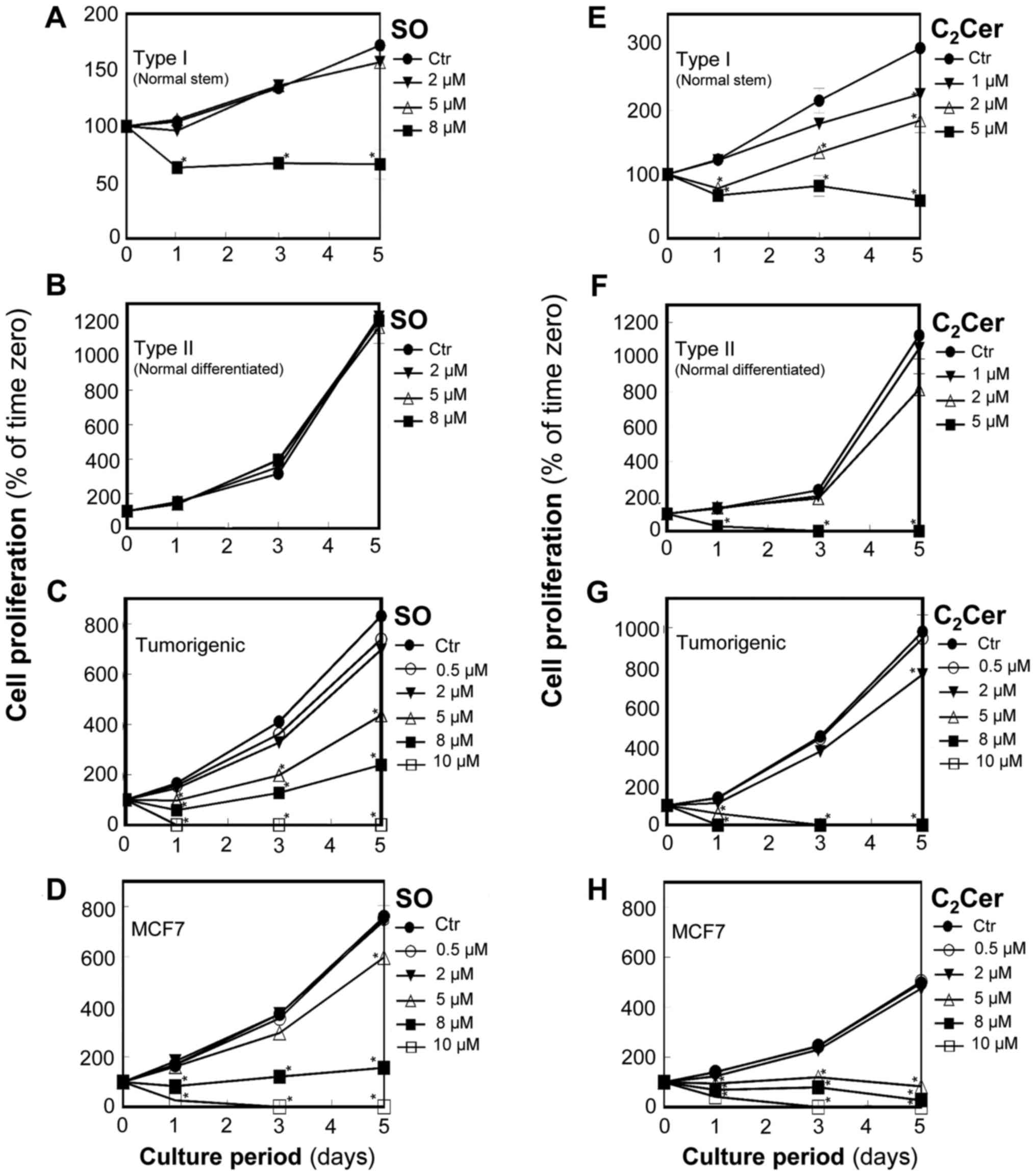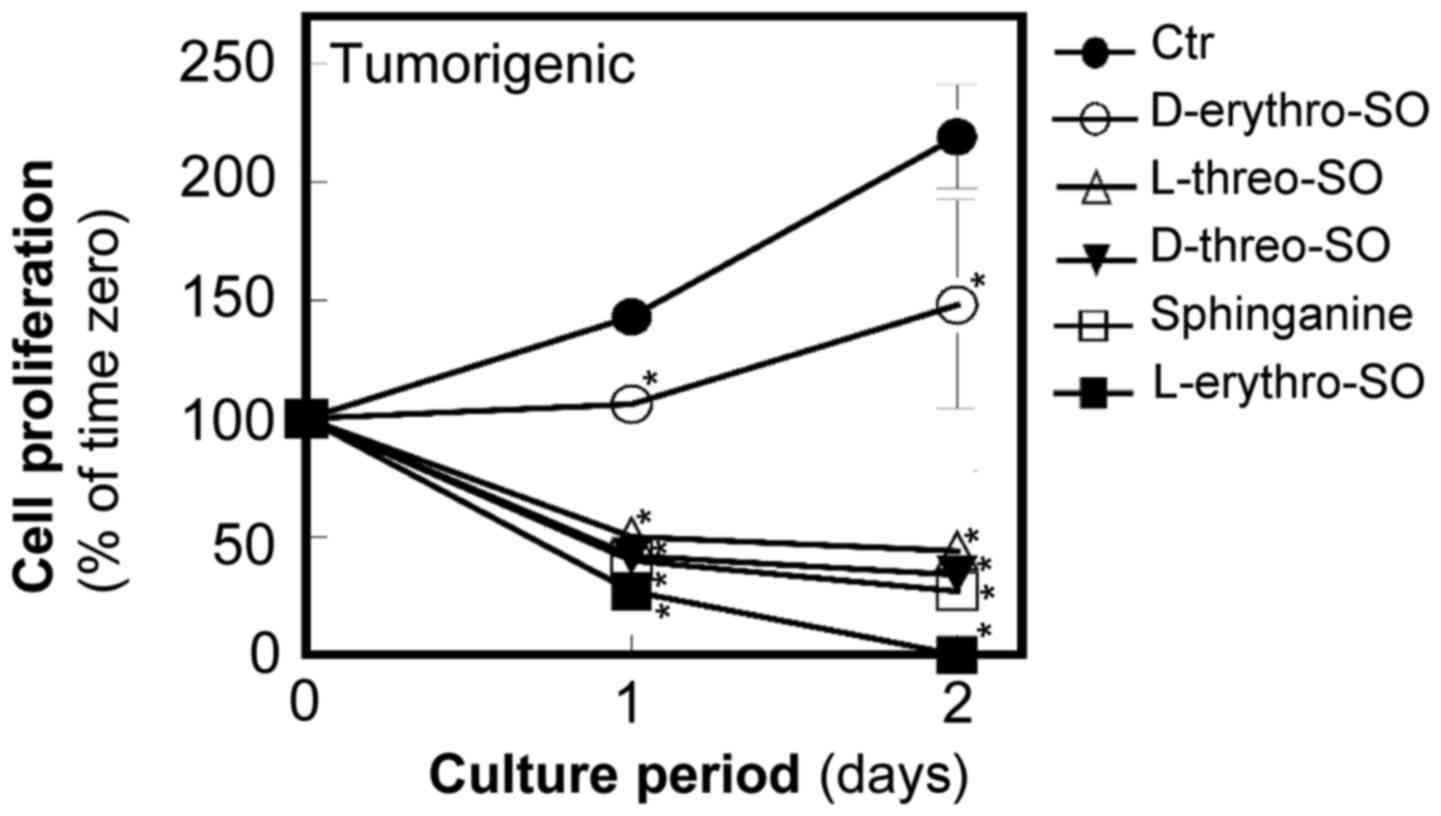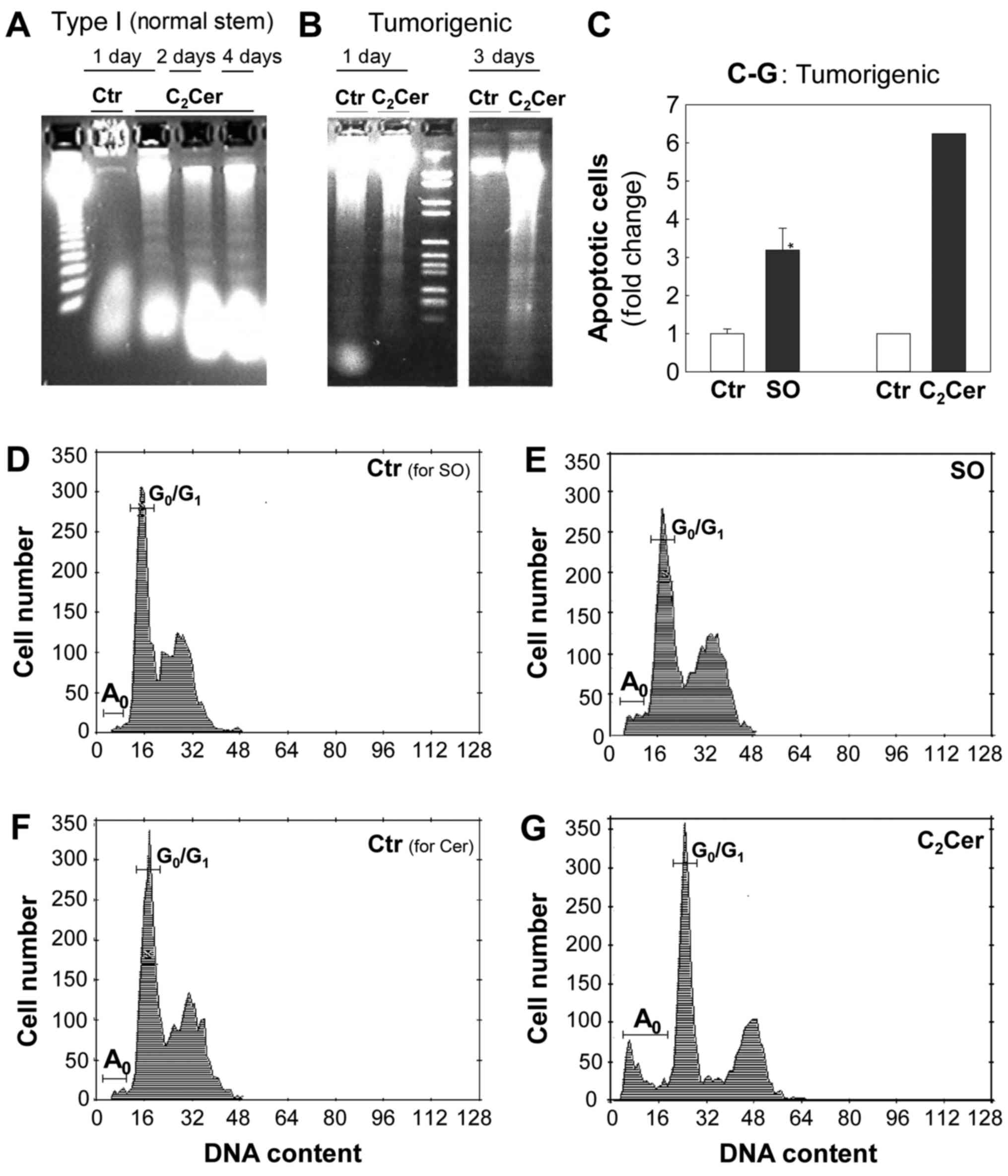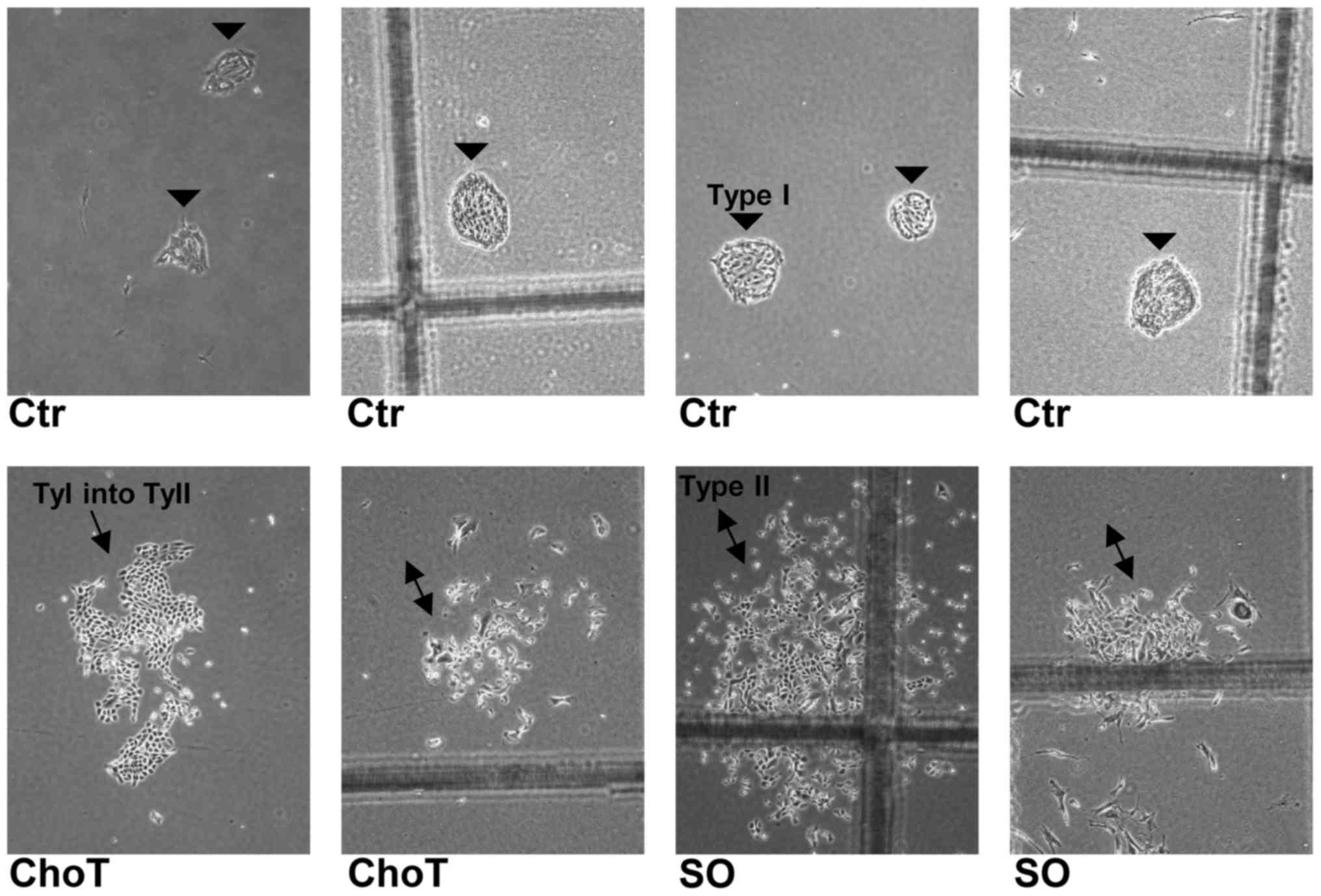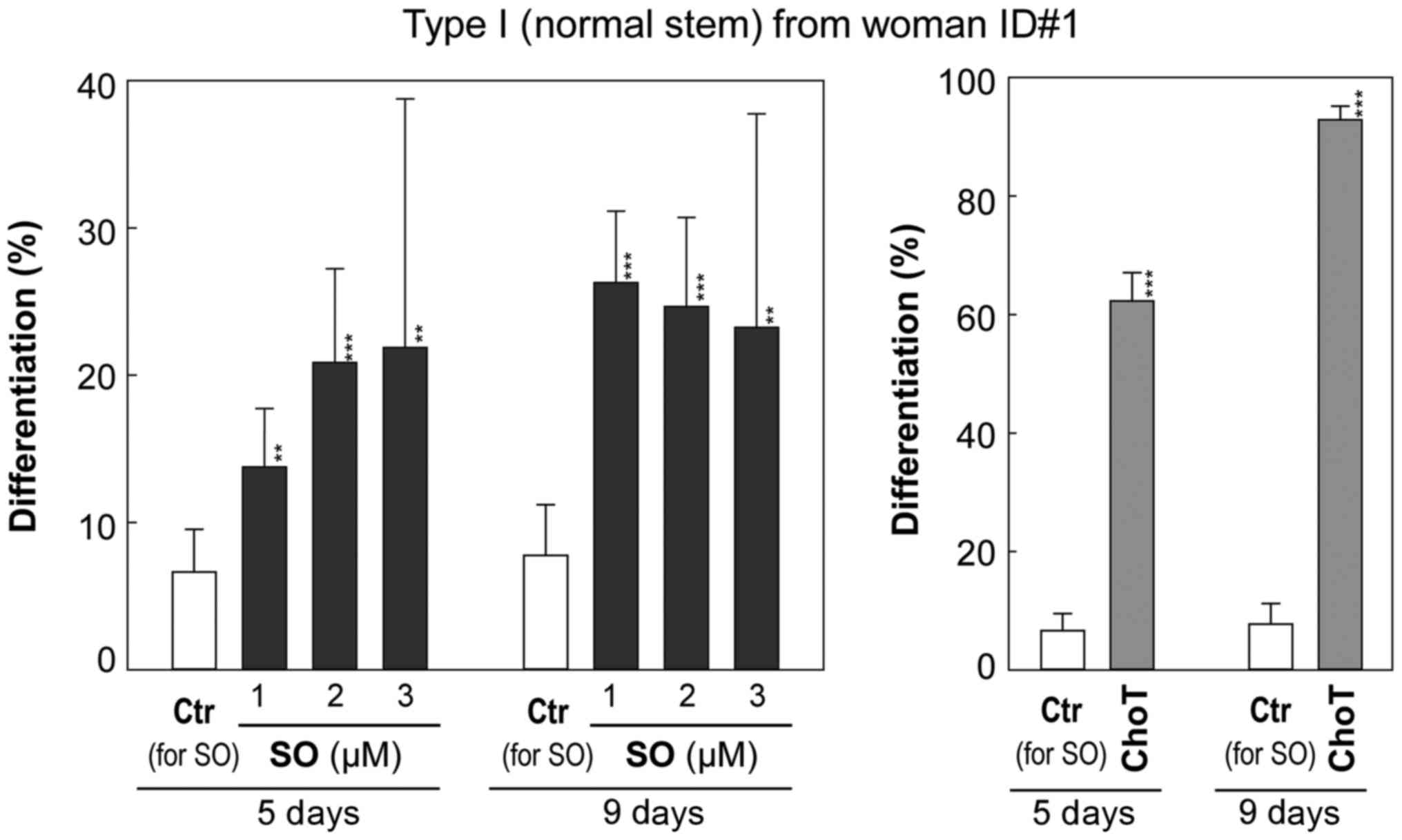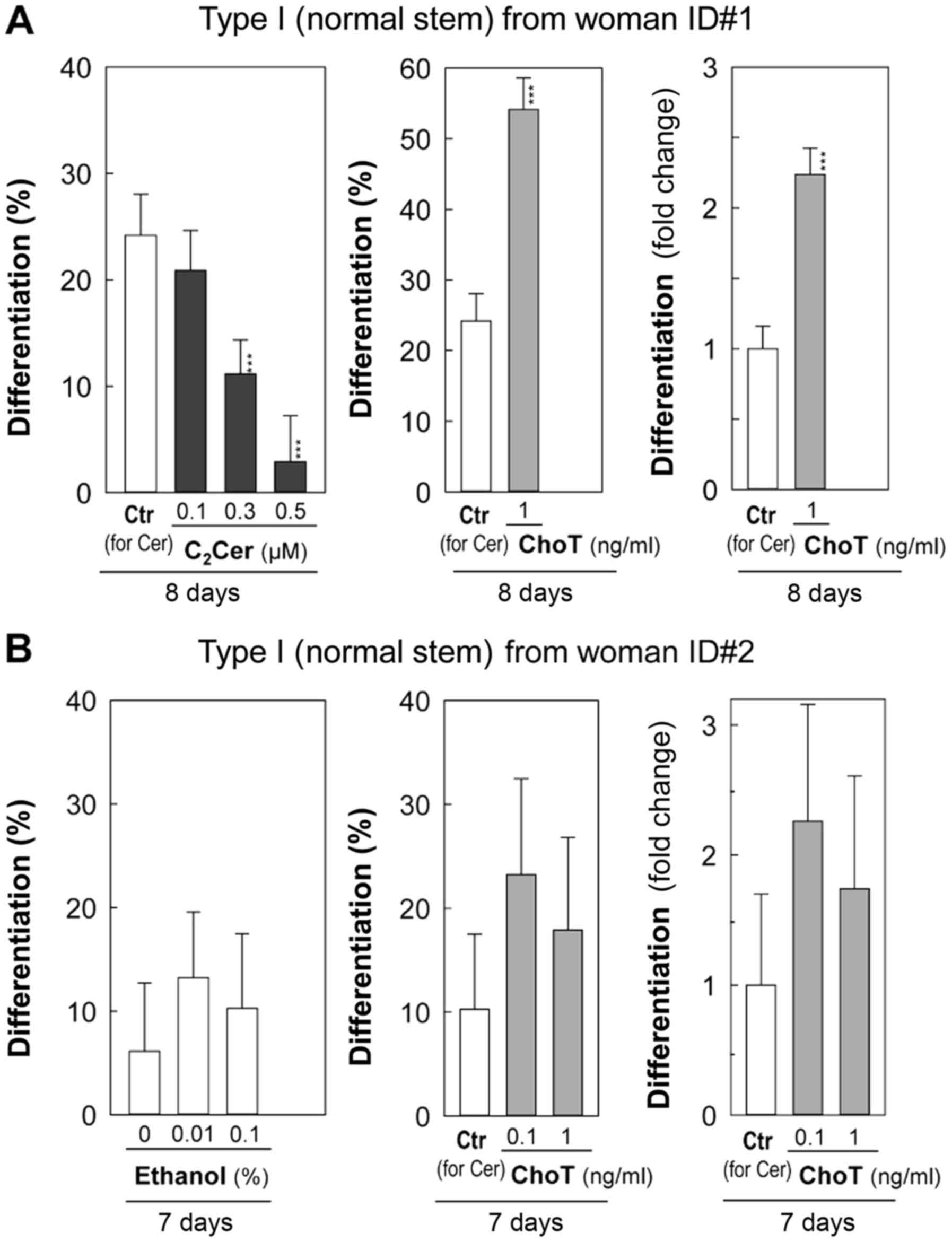|
1
|
American Cancer Society Cancer: Facts and
Figures 2017. American Cancer Society Inc.; Atlanta, GA: 2017
|
|
2
|
Eheman CR, Shaw KM, Ryerson AB, Miller JW,
Ajani UA and White MC: The changing incidence of in situ and
invasive ductal and lobular breast carcinomas: United States,
1999–2004. Cancer Epidemiol Biomarkers Prev. 18:1763–1769. 2009.
View Article : Google Scholar : PubMed/NCBI
|
|
3
|
Russo J and Russo IH: Biological and
molecular bases of mammary carcinogenesis. Lab Invest. 57:112–137.
1987.PubMed/NCBI
|
|
4
|
Oakes SR, Gallego-Ortega D and Ormandy CJ:
The mammary cellular hierarchy and breast cancer. Cell Mol Life
Sci. 71:4301–4324. 2014. View Article : Google Scholar : PubMed/NCBI
|
|
5
|
Ahn EH and Schroeder JJ: Bioactive
sphingolipids are significant constituents of soy and dairy
products. J Food Sci. 67:522–524. 2002. View Article : Google Scholar
|
|
6
|
Hannun YA and Obeid LM: Principles of
bioactive lipid signalling: Lessons from sphingolipids. Nat Rev Mol
Cell Biol. 9:139–150. 2008. View Article : Google Scholar : PubMed/NCBI
|
|
7
|
Ogretmen B: Sphingolipid metabolism in
cancer signalling and therapy. Nat Rev Cancer. 18:33–50. 2018.
View Article : Google Scholar :
|
|
8
|
Huang YL, Huang WP and Lee H: Roles of
sphingosine 1-phosphate on tumorigenesis. World J Biol Chem.
2:25–34. 2011. View Article : Google Scholar : PubMed/NCBI
|
|
9
|
Tai MH, Chang CC, Kiupel M, Webster JD,
Olson LK and Trosko JE: Oct4 expression in adult human stem cells:
Evidence in support of the stem cell theory of carcinogenesis.
Carcinogenesis. 26:495–502. 2005. View Article : Google Scholar
|
|
10
|
Kang KS, Morita I, Cruz A, Jeon YJ, Trosko
JE and Chang CC: Expression of estrogen receptors in a normal human
breast epithelial cell type with luminal and stem cell
characteristics and its neoplastically transformed cell lines.
Carcinogenesis. 18:251–257. 1997. View Article : Google Scholar : PubMed/NCBI
|
|
11
|
Kao CY, Nomata K, Oakley CS, Welsch CW and
Chang CC: Two types of normal human breast epithelial cells derived
from reduction mammoplasty: Phenotypic characterization and
response to SV40 transfection. Carcinogenesis. 16:531–538. 1995.
View Article : Google Scholar : PubMed/NCBI
|
|
12
|
Kao CY, Oakley CS, Welsch CW and Chang CC:
Growth requirements and neoplastic transformation of two types of
normal human breast epithelial cells derived from reduction
mammoplasty. In Vitro Cell Dev Biol Anim. 33:282–288. 1997.
View Article : Google Scholar : PubMed/NCBI
|
|
13
|
Chang CC, Sun W, Cruz A, Saitoh M, Tai MH
and Trosko JE: A human breast epithelial cell type with stem cell
characteristics as target cells for carcinogenesis. Radiat Res.
155:201–207. 2001. View Article : Google Scholar
|
|
14
|
Ahn EH, Chang CC and Schroeder JJ:
Evaluation of sphinganine and sphingosine as human breast cancer
chemotherapeutic and chemopreventive agents. Exp Biol Med
(Maywood). 231:1664–1672. 2006. View Article : Google Scholar
|
|
15
|
Kang KS, Sun W, Nomata K, Morita I, Cruz
A, Liu CJ, Trosko JE and Chang CC: Involvement of tyrosine
phosphorylation of p185(c-erbB2/neu) in tumorigenicity induced by
X-rays and the neu oncogene in human breast epithelial cells. Mol
Carcinog. 21:225–233. 1998. View Article : Google Scholar : PubMed/NCBI
|
|
16
|
Sun W, Kang KS, Morita I, Trosko JE and
Chang CC: High susceptibility of a human breast epithelial cell
type with stem cell characteristics to telomerase activation and
immortalization. Cancer Res. 59:6118–6123. 1999.
|
|
17
|
Ahn EH and Schroeder JJ: Sphingoid bases
and ceramide induce apoptosis in HT-29 and HCT-116 human colon
cancer cells. Exp Biol Med (Maywood). 227:345–353. 2002b.
View Article : Google Scholar
|
|
18
|
Chang CC: Recent translational research:
Stem cells as the roots of breast cancer. Breast Cancer Res.
8:1032006. View Article : Google Scholar : PubMed/NCBI
|
|
19
|
Kakarala M and Wicha MS: Implications of
the cancer stem-cell hypothesis for breast cancer prevention and
therapy. J Clin Oncol. 26:2813–2820. 2008. View Article : Google Scholar : PubMed/NCBI
|
|
20
|
Goñi FM and Alonso A: Biophysics of
sphingolipids I. Membrane properties of sphingosine, ceramides and
other simple sphingolipids. Biochim Biophys Acta. 1758:1902–1921.
2006. View Article : Google Scholar : PubMed/NCBI
|
|
21
|
Goñi FM, Contreras FX, Montes LR, Sot J
and Alonso A: Biophysics (and sociology) of ceramides. Biochem Soc
Symp. 72:177–188. 2005. View Article : Google Scholar
|
|
22
|
Contreras FX, Basañez G, Alonso A,
Herrmann A and Goñi FM: Asymmetric addition of ceramides but not
dihydroceramides promotes transbilayer (flip-flop) lipid motion in
membranes. Biophys J. 88:348–359. 2005. View Article : Google Scholar
|
|
23
|
Phillips DC, Martin S, Doyle BT and
Houghton JA: Sphingosine-induced apoptosis in rhabdomyosarcoma cell
lines is dependent on pre-mitochondrial Bax activation and
post-mitochondrial caspases. Cancer Res. 67:756–764. 2007.
View Article : Google Scholar : PubMed/NCBI
|
|
24
|
Messing RO: Ethanol as an enhancer of
neural differentiation. Alcohol Alcohol Suppl. 2:289–293.
1993.PubMed/NCBI
|
|
25
|
Garriga J, Adanero E, Fernández-Solá J,
Urbano-Márquez A and Cussó R: Ethanol inhibits skeletal muscle cell
proliferation and delays its differentiation in cell culture.
Alcohol Alcohol. 35:236–241. 2000. View Article : Google Scholar : PubMed/NCBI
|
|
26
|
Izevbigie EB, Ekunwe SI, Jordan J and
Howard CB: Ethanol modulates the growth of human breast cancer
cells in vitro. Exp Biol Med (Maywood). 227:260–265. 2002.
View Article : Google Scholar
|
|
27
|
Kornfehl J, Temmel A, Formanek M and
Knerer B: Effects of ethanol treatment of proliferation and
differentiation in a head and neck squamous cell carcinoma cell
line. Alcohol Clin Exp Res. 23:1102–1107. 1999. View Article : Google Scholar : PubMed/NCBI
|
|
28
|
Hui EK, Yang YH and Yung BY:
Schedule-dependent sphinganine potentiation of retinoic
acid-induced differentiation, cell growth inhibition, and
nucleophosmin translocation in a human leukemia cell line (HL-60).
Exp Hematol. 20:454–461. 1992.PubMed/NCBI
|
|
29
|
Ohta H, Sweeney EA, Masamune A, Yatomi Y,
Hakomori S and Igarashi Y: Induction of apoptosis by sphingosine in
human leukemic HL-60 cells: A possible endogenous modulator of
apoptotic DNA fragmentation occurring during phorbol ester-induced
differentiation. Cancer Res. 55:691–697. 1995.PubMed/NCBI
|
|
30
|
Johnstone ED, Chan G, Sibley CP, Davidge
ST, Lowen B and Guilbert LJ: Sphingosine-1-phosphate inhibition of
placental trophoblast differentiation through a G(i)-coupled
receptor response. J Lipid Res. 46:1833–1839. 2005. View Article : Google Scholar : PubMed/NCBI
|
|
31
|
Hashimoto Y, Matsuzaki E, Higashi K,
Takahashi-Yanaga F, Takano A, Hirata M and Nishimura F:
Sphingosine-1-phosphate inhibits differentiation of C3H10T1/2 cells
into adipocyte. Mol Cell Biochem. 401:39–47. 2015. View Article : Google Scholar
|
|
32
|
Herbert BS, Wright WE and Shay JW:
Telomerase and breast cancer. Breast Cancer Res. 3:146–149. 2001.
View Article : Google Scholar : PubMed/NCBI
|
|
33
|
Kulić A, Plavetić ND, Gamulin S,
Jakić-Razumović J, Vrbanec D and Sirotković-Skerlev M: Telomerase
activity in breast cancer patients: Association with poor prognosis
and more aggressive phenotype. Med Oncol. 33:232016. View Article : Google Scholar
|
|
34
|
Wu KJ, Grandori C, Amacker M, Simon-Vermot
N, Polack A, Lingner J and Dalla-Favera R: Direct activation of
TERT transcription by c-MYC. Nat Genet. 21:220–224. 1999.
View Article : Google Scholar : PubMed/NCBI
|
|
35
|
Ku WC, Cheng AJ and Wang TC: Inhibition of
telomerase activity by PKC inhibitors in human nasopharyngeal
cancer cells in culture. Biochem Biophys Res Commun. 241:730–736.
1997. View Article : Google Scholar
|
|
36
|
Hannun YA, Loomis CR, Merrill AH Jr and
Bell RM: Sphingosine inhibition of protein kinase C activity and of
phorbol dibutyrate binding in vitro and in human platelets. J Biol
Chem. 261:12604–12609. 1986.PubMed/NCBI
|
|
37
|
Czajkowski R and Barańska J: Sphingosine
and phorbol ester modulate protein kinase C activity and modify
ATP-evoked calcium mobilization in glioma C6 cells. Biochem Biophys
Res Commun. 260:614–618. 1999. View Article : Google Scholar : PubMed/NCBI
|
|
38
|
Sharma HW, Sokoloski JA, Perez JR, Maltese
JY, Sartorelli AC, Stein CA, Nichols G, Khaled Z, Telang NT and
Narayanan R: Differentiation of immortal cells inhibits telomerase
activity. Proc Natl Acad Sci USA. 92:12343–12346. 1995. View Article : Google Scholar : PubMed/NCBI
|
|
39
|
Yamada O, Ozaki K, Nakatake M, Akiyama M,
Kawauchi K and Matsuoka R: Multistep regulation of telomerase
during differentiation of HL60 cells. J Leukoc Biol. 83:1240–1248.
2008. View Article : Google Scholar : PubMed/NCBI
|



